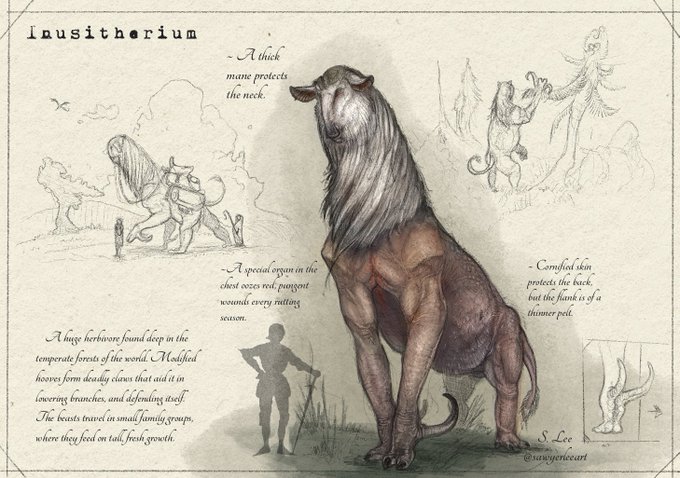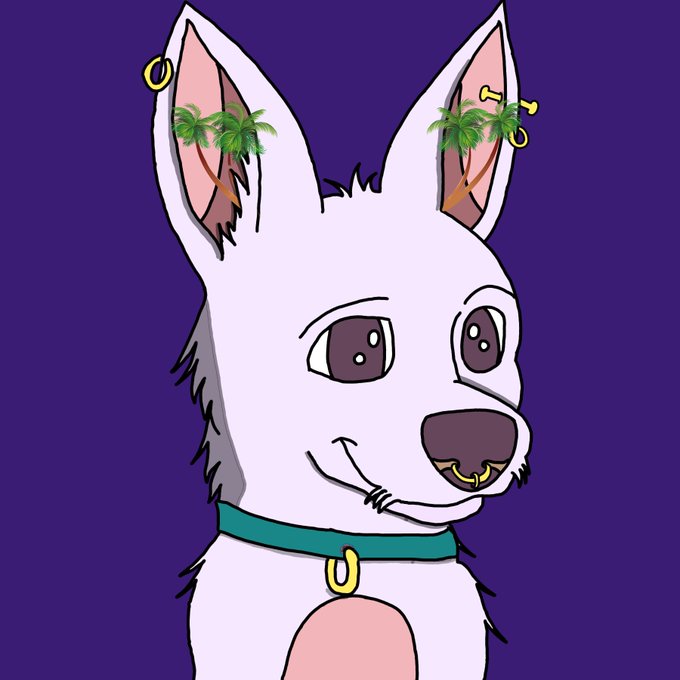populationsのTwitterイラスト検索結果。 307 件
A new No Man's Land update! First of a series called "Parallel Lives of the Keas", in which we explore the lives of two Kea populations, one from native New Zealand, and one introduced in Cincinatti.
#specevo #kea #speculativeevolution #artistsontwitter #postapocalypse
@Rhodesmin1 ““““““Celtic””””””” yes because there are definitely Celtic populations that persisted past the Roman Iron Age outside of France. The Irish, Scottish and especially Welsh are definitely actual Celts and not Germanics, Iberians, Milesians and Scythians.
Michelle Jing Chan's illustrations capture the magic in everyday moments and create immersive, inclusive worlds where underrepresented populations can see themselves reflected.
https://t.co/CMYOEir2De
@michellieart
Snow Sheep
Scientific Name: Ovis nivicola
Average Lifespan in the Wild: 9 years
Japanese Name: ユキヒツジ
Conservation Status: Local Populations Threatened
Diet: Herbivore
Distribution: Siberia
Also known as: Siberian Bighorn Sheep
Romanised Name: Yuki Hitsuji
Ezo Brown Bear
Also known as: Hokkaidō Brown Bear
Distribution: Hokkaidō
Romanised Name: Ezo Higuma
Japanese Name: エゾヒグマ
Diet: Omnivore
Scientific Name: Ursus arctos yesoensis
Conservation Status: Local Populations Threatened
Average Lifespan in the Wild: 30 years
@Steve25576554 #eagles are coming @BFFC_NFT @VeSeaOfficial #vetworld #VeChain @Steve25576554 @WoV_Ditryin @JasonFisher_ @RSPBEngland @endangered @UNFCCC @RAN @educationweek we are a project dedicated bringing awareness to climate change and our forever growing #endangered #animal populations
The continent of Har Fang has no native apes and has been isolated from the rest of the planet for millions of years. The Plains Dragon was the first species to achieve sapience here, separated into two populations by a mountain range, the Anorri and the Imarri.
People have managed to domesticate populations of each of these creatures, both of which make excellent siege beasts https://t.co/bb9EstYfxn
🌴Nature friendly Super Dog Tino
🐶https://t.co/vkm4NjL0sy
1📃The consequences of polluting the environment are far-reaching and can have devastating effects on both the natural world and human populations. Some of the most significant impacts of environmental pollution include:
9 - Some spiders can live for several years, while others only live for a few months👴
10 - Spiders play an important role in the ecosystem by controlling insect populations 🐛
The wild rabbit is in trouble:
"UK rabbit populations are being decimated by disease...hailed as an 'ecosystem engineer' landowners encouraged to create “rabbit hotels” to revive its numbers @guardian
Read more here:https://t.co/KX5UsdqzKk
'Brown Bunny' drawing @Janeleemcc
Phant Fact
10. Elephants are endangered, with their populations declining due to habitat loss and poaching.
The Sanctuary, https://t.co/Z1Sgdit7c5, provides a safe retirement community for captive and rescued elephants.
#ElegantHerd #theHerdIsStrong #HerdStrong
📢A new FastAct™ is available!
We introduce SPY700-FastAct
https://t.co/Skk5o5mTUk
Our FastAct™ probes capture fast actin structures.
Movie: 2 cell populations stained separately with SPY-DNA probes were mixed and stained with SPY700-FastAct, allowing to track the 2 populations
Avatar sona! Well I’m not albino but I wanted to do something with north populations #AvatarTheWayOfWater #Avatar2 #avatar
Can't waste Too Many Populations Pigs, Aardvarks, Bears, Rabbits, Weasels, and Crocodiles in the Evergreen Forest without Wolves, just make more fun than just other boring characters, I mean just don't listen to Nelvana in Ontario, Canada
@zoidberg_jonh Some steppe guinea pig populations might stray into tundra from the Eurasian steppe.
[Nouveau Podcast!]
Pendant des millénaires, la coca fut employée pour différents usages par les populations andines. Au XIXe siècle, le monde occidental se saisit de la feuille, la France connaissant même une véritable « cocamania ».
1/3
Saiga Antelope
Saiga Antelopes are found in three areas of central Asia with different populations: Russia (Kalmykia), Kazakhstan and Mongolia. They inhabit open dry steppes and semi-arid desserts, in flat areas with low-growing vegetation.
It's important to protect and conserve frog populations, as they play a vital role in the health of our planet. By working to preserve habitats and reducing impact on the environment, we can help ensure the survival of these amazing animals. #frogconservation #protectourplanet
Frogs also have a unique role as both predators and prey in their ecosystems. They eat insects, which helps to control pest populations, and they are also a source of food for other animals. #predators #prey















































